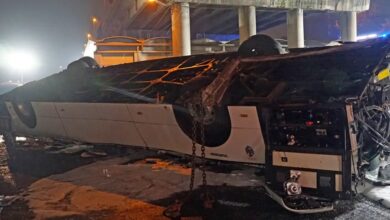Top tips for visiting Monument Valley

Monument Valley Tribal Park, on the Utah-Arizona border, is a landscape that looks like it was immortalized by artists.
There, whimsical red rock formations rise out of the desert sand and immediately stimulate the imagination.
The butte and mesas have a variety of shapes and have names like Three Sisters, Totem Pole, Elephant Butte, Camel Butte, and West Mitten Butte (“mitten” means mitten). Some recognize completely different figures in the bizarre rocks, which are at a safe distance from each other.
The landscape (which is not a national park but is under similar protection) owes its unusual shape primarily to the climate. The temperatures vary between minus three degrees in winter and plus 30 degrees in summer, plus wind and drought, which gradually shaped the sandstone. Over the course of millions of years, table mountains (“mesa”) up to 300 meters high such as the Thunderbird, Sentinel, Raingood Mesa and the bizarre buttes were formed.
Backdrop for westerns and other famous films
No wonder that such a landscape is often used as a film backdrop. Many Westerns starring John Wayne were made in the area, including John Ford’s “Stage Coach” (German title: “Ringo”) – a rocky outcrop is therefore also called “John Ford’s Point”. Sergio Leone’s “Play Me a Song of Death” and Dennis Hopper’s road movie “Easy Rider” were also filmed in Monument Valley.
The landscape, which is about 150 miles from Flagstaff, Arizona and 400 miles from Las Vegas, is owned by the Navajo Indians (as is Antelope Canyon). They manage and live in Monument Valley, which is called Tse’Bii’Ndzisgaii in their language. Therefore, some rules must be observed. If you want to hike or camp in the sanctuary, you need a hiking or camping permit. The same applies to photography or filming. Also, rock climbing is prohibited—the area is sacred to the Navajo.
Scenic Drive to the Rocks
Those visiting the area should make time for the 17-mile scenic drive, which includes the major rocks. These include East and West Mitten Butte (they look like mittens), Merrick and Mitchell Butte (named after two prospectors who discovered silver in the park), and Elephant Butte.
Continue to the Three Sisters (this rock formation looks like a nun looking at her two students), the Camel Butte, the Rain God Mesa (the geological center of the park – this is where Navajo medicine men pray to the rain god), and the totem pole.
Views of spectacular rock formations
East of the totem pole is Yei Bi Chei, which looks like a group of dancers next to a hogan, one of the traditional Navajo houses. Other famous rocks include Artist’s Point, which is great for painting the landscape from, Spearhead Mesa (a sort of arrow sticking out of a spire), the North Window to the right of Elephant Butte, and The Thumb (it looks like a thumb , but also a bit like a cowboy boot). Before driving, you should consider that the scenic drive is not a road, but a dirt track, which is quite dusty in places.
Hike the Wildcat Trail
If you want to explore the landscape on foot, you should set aside two hours for the Wildcat Trail. It is 3.2 miles long and loops around West Mitten Butte. Signs along the way indicate special plants. Please make sure you have enough water, stay on the path and take your rubbish with you – there are no rubbish bins along the route.
Guided tours by car, on foot and on horseback
A guided tour through the areas in Monument Valley is also worthwhile – here participants get some insider tips and also hear one or the other anecdote. There are tours by car, on foot and by horse. In addition to driving along the Scenic Drive, the car tours also provide access to areas that are off-limits to private vehicles.
One thing no one should miss when visiting Monument Valley is the sunset. This is the time when the red rocks begin to glow and some silhouettes become paper cutouts. An unforgettable sight!


